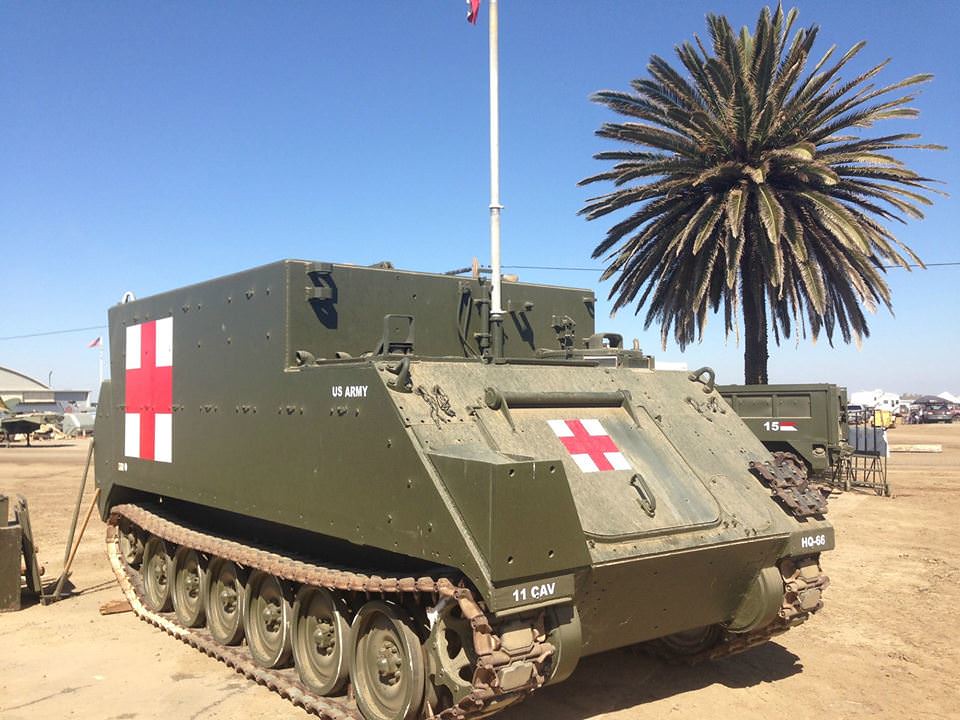NASA's armored vehicles of military origin at the Kennedy Space Center
The United States space agency has been using military equipment for many years, including aircraft and ground vehicles.
One of the problems faced by space rocket launches is fire. A fire implies a serious risk considering that a rocket is full of fuel. The best-known proof of this danger occurred on January 27, 1967 at NASA's Kennedy Space Center, in Cape Canaveral (Florida), when a fire killed the three Apollo astronauts 1: Gus Grissom, Ed White and Roger Chaffee.

During the Apollo program, one of the acquisitions that NASA made to provide means to rescue astronauts in case of fire were four M-113A2 armored vehicles, which in 1961 entered service in the US Army. United States as a troop transport. This model of armor has been and continues to be used by many armies, and is even used today in the Ukrainian War.

Initially, NASA's four M-113A2s were painted dark, with large numbers painted in white, and a fireproof coating was added, in addition to being completely sealed.

These vehicles were later painted white with red numbers. The vehicles were operated by the Kennedy Space Center Fire Department, although one of them was always near the launch pad , without a crew, to be used by astronauts in case they need an escape vehicle.

Finally, NASA's M-113A2s were painted yellow with a reflective stripe, in the style of many vehicles from different fire departments in the United States.

These M-113A2 were in service until 2013, when they were finally retired after many years in service at the Kennedy Space Center. These M-113A2 lacked weapons and did not have some of the military accessories characteristic of this type of armor vehicles.

In addition to these M-113s, NASA also acquired an M-577A3 command vehicle, which was provided by the manufacturer of these armored vehicles, Food Machinery Corporation (FMC). The vehicle was modified by NASA's Ames Research Center (ARC), it was named HAZMAT XHRV-1 and was used as an experimental response vehicle.

On its front part, this vehicle had a manipulator arm for hazardous materials. The rear ramp was equipped with two accesses for special suits, which offered the possibility of accessing the suits directly from the vehicle. A transparent dome was installed in the driver's position.

A prototype of the HAZMAT XHRV-1 was made that was active between 1994 and 1997. Today it is preserved by the Eagle Field Foundation, painted as if it were a military ambulance.

In December 2013, NASA acquired four BAE Caiman MRAP armored vehicles, a model used by the US Army in the wars in Afghanistan and Iraq, to replace its M-113A2.

These Caiman MRAPs arrived at NASA from the US Army's Red River Depot in Texarkana, Texas, where they were temporarily stored. These wheeled vehicles are painted white, without numbers or markings of any kind. They are faster than the M-113 and offer better visibility to the driver.

In 2012, the Kennedy Space Center published this video about its M-113A2, a year before its retirement from service:
Three years later, the Kennedy Space Center published this other video showing its current MRAPs:
A few days ago, the writer Mark Felton published an interesting video reviewing the History of these NASA armored vehicles:
---
Photos: NASA / ESA / Kraft Telerobotics / Eagle Field Foundation.
|
Don't miss the news and content that interest you. Receive the free daily newsletter in your email: Click here to subscribe |
- Lo más leído
- A large collection of Volkswagen cars hidden in an abandoned mine in Switzerland
- Sabbione: a beautiful Swiss town that looks like something out of 'The Lord of the Rings'
- The supermassive black hole of Phoenix A, the biggest known light-devouring monster
- An old Soviet military plane abandoned from 1971 on a Russian island near Alaska
- The 'Bomber Glacier': The wreckage of a B-29 on a remote mountain of Alaska
- Ikeshima, a semi-abandoned Japanese island that has post-apocalyptic landscapes
- The MRU, a mysterious underground city of nazi Germany with 80 km of tunnels

 ES
ES





Opina sobre esta entrada: